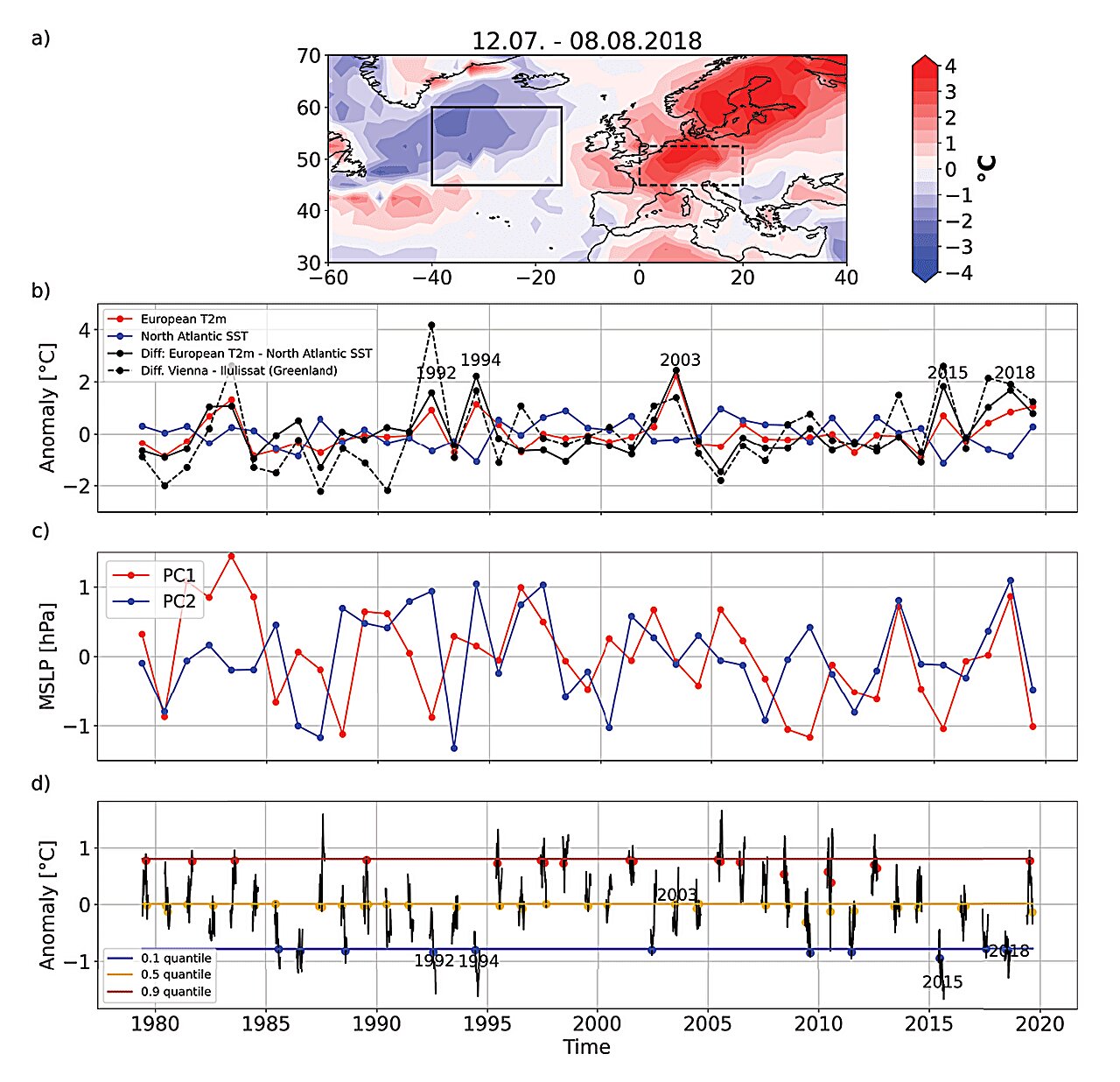

The surface temperature of the North Atlantic plays an important role in the occurrence of heat waves in Europe. However, researchers at the GEOMAR Helmholtz Centre for Ocean Research in Kiel have shown that it is not high water temperatures but low water temperatures that are responsible for heat events on land.
For their study, they used a combination of observations and weather models to investigate the relationship between North Atlantic sea surface temperatures (SST) and heat events in Europe over the period 1979 to 2019. They have now published their results in the journal Tellus A: Dynamic Meteorology and Oceanography.
The researchers found 12 events in which an unusually cold North Atlantic surface temperature was followed by a maximum land temperature in Europe. Additionally, there were 17 European heat events preceded by a drop in sea surface temperatures. In addition to the contrast between cool water and hot land temperatures, the interaction between a North Atlantic low-pressure system and a European high-pressure system was another striking feature.
Climate physicist Julian Krüger, a Ph.D. student in the Climate Extremes research group of the Marine Meteorology research unit at GEOMAR and lead author of the study, says, “We can see this connection particularly well in the summers of 2015 and 2018 when the North Atlantic was unusually cold and at the same time heat events occurred over Europe.”
The researchers analyzed several meteorological factors to understand the relationship between North Atlantic temperatures and European heat events. They found that during these events, the subpolar North Atlantic experiences an increased flow of heat from the ocean into the atmosphere, as well as rising air masses and precipitation.
The released heat is transported towards Europe, contributing to the formation of an area of high pressure. This, in turn, favors clear skies with strong solar radiation, which is decisive for the maximum surface temperature in Europe.
Krüger says, “The results of the study contribute to the understanding of the statistical and physical relationship between the North Atlantic surface temperature and European heat events, which is also crucial for better predictability of heat events in a changing future climate.”
More information:
Julian Krüger et al, Connecting North Atlantic SST Variability to European Heat Events over the Past Decades, Tellus A: Dynamic Meteorology and Oceanography (2023). DOI: 10.16993/tellusa.3235
Provided by
Helmholtz Association of German Research Centres
Citation:
Understanding the key to predicting heat events in Central Europe (2023, December 12)
retrieved 12 December 2023
from https://phys.org/news/2023-12-key-events-central-europe.html
This document is subject to copyright. Apart from any fair dealing for the purpose of private study or research, no
part may be reproduced without the written permission. The content is provided for information purposes only.





